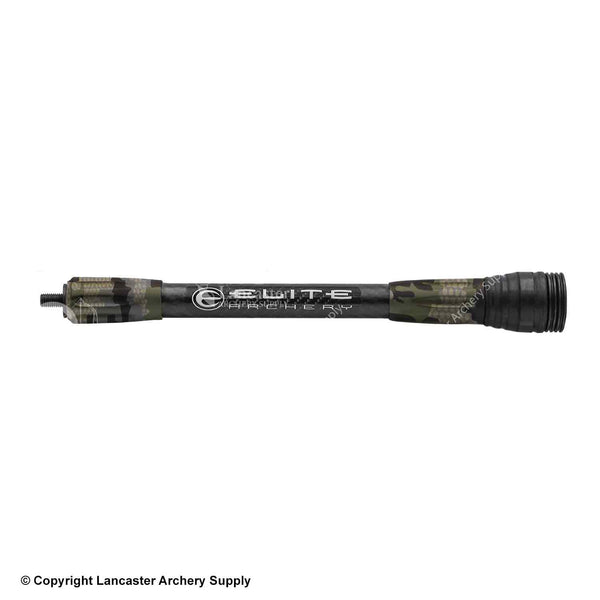Bow Stabilizer Buying Overview: Everything You Need to Know Prior To You Buy
Bow Stabilizer Buying Overview: Everything You Need to Know Prior To You Buy
Blog Article
Optimize Your Archery Precision With These Bow Stabilizer Strategies
One essential element that can significantly influence your efficiency is the appropriate utilization of bow stabilizers. Whether you are a seasoned archer looking to refine your abilities or a newbie excited to enhance your precision, grasping these bow stabilizer techniques can be the key to hitting your mark with unparalleled uniformity.
Benefits of Making Use Of Bow Stabilizers
Making use of bow stabilizers can considerably enhance an archer's precision and general efficiency by lessening bow torque and vibration. Bow torque, brought on by the unequal distribution of weight in the bow, can lead to incongruities in shot placement. By affixing a bow stabilizer, the weight is redistributed, reducing the impacts of torque and helping the archer accomplish a more constant shot. Additionally, bow stabilizers moisten vibration, which not only boosts the comfort of capturing but additionally avoids the bow from leaping upon release, therefore assisting in preserving correct objective.
Furthermore, bow stabilizers can assist in holding the bow consistent, specifically during windy problems or when firing from longer ranges. The added weight at the front of the bow supplies security and equilibrium, allowing the archer to concentrate on intending without the distraction of bow motion. Generally, the advantages of using bow stabilizers extend beyond simply precision, enhancing the archer's experience and performance in various shooting situations.
Selecting the Right Bow Stabilizer
Picking the proper bow stabilizer is critical for maximizing your archery devices and enhancing shooting performance. Heavier stabilizers can aid reduce bow torque and absorb even more resonance, leading to a steadier objective.

Lastly, think about the layout of the stabilizer. Some stabilizers come with adjustable weights or dampeners that permit you to customize the balance and feeling of your bow. Inevitably, choosing the ideal bow stabilizer involves discovering an equilibrium in between weight, size, layout, and product to enhance your shooting accuracy and general efficiency.
Correct Installation Techniques
To make sure optimum efficiency and safety in archery, mastering proper setup methods for your bow stabilizer is crucial. The first step in installing a bow stabilizer is to identify the appropriate placement on your bow. Many stabilizers are connected to the front of the riser, listed below the hold, to assist counterbalance the weight of accessories such as quivers and views. Make sure that the stabilizer is not conflicting with other elements or impeding your shooting type.
Following, safely attach the stabilizer to the bow using the ideal installing hardware. read this Some stabilizers come with flexible weights that can be added or removed to make improvements the equilibrium of your bow.

Changing Stabilizer Weight and Size
After making certain the correct installment of your bow stabilizer, the following step includes changing the weight and length to enhance its efficiency in boosting archery precision. The weight of the stabilizer plays a vital function in decreasing bow activity throughout the shot cycle.
A longer stabilizer can provide better stability by increasing the range between the bow and the weight at the end of the stabilizer. Alternatively, a much shorter stabilizer provides extra maneuverability and might be liked by archers who value dexterity and quick motions during capturing.
Advanced Stabilizer Tuning Tips
Achieving optimum bow stability and accuracy in archery demands a nuanced strategy to sophisticated stabilizer tuning. Advanced stabilizer adjusting entails fine-tuning different components to improve the bow's balance, minimize vibration, and enhance total accuracy. One vital technique is to trying out different stabilizer arrangements, including back-bar and side-bar setups, to locate the optimal equilibrium between security and maneuverability for your shooting design. bow stabilizer. Additionally, readjusting the angle and positioning of the stabilizer can have a significant influence on how the bow reacts upon launch.
Another vital aspect of advanced stabilizer adjusting is maximizing the damping buildings of the stabilizer system. Discovering various materials for the stabilizer construction, such as carbon fiber or light weight aluminum, can likewise influence the bow's performance by altering its weight circulation and tightness.
Final Thought
In verdict, optimizing archery accuracy can be accomplished through the correct selection, installment, and article source adjustment of bow stabilizers. On the whole, incorporating bow stabilizers right into archery practice can lead to enhanced efficiency and enhanced precision.
Using bow stabilizers can substantially boost an archer's accuracy and general efficiency by reducing bow torque and resonance. Longer stabilizers provide higher security and balance, particularly for long-distance capturing, while shorter stabilizers use even more convenience and are simpler to maneuver in tight spaces (bow stabilizer). Carbon fiber stabilizers are sturdy and light-weight, while light weight aluminum stabilizers are durable and supply outstanding resonance dampening
A longer stabilizer can supply higher security by enhancing the distance between the bow and the weight discover here at the end of the stabilizer.An additional crucial aspect of sophisticated stabilizer tuning is enhancing the damping residential or commercial properties of the stabilizer system.
Report this page